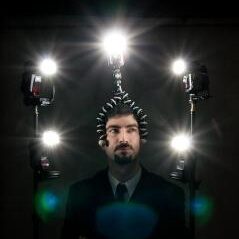Shooting Portraits on the (Right) Level
Full-length shots give dramatically different impressions depending on your height. When you’re photographing someone from up high, they can end up distorted in your picture—for example with shortened legs. Let’s take an illustrated look together at the effects that height and distance can have on portraits.
